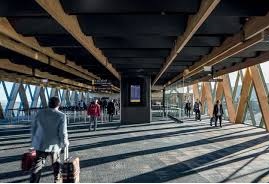Wellington International Airport in New Zealand has unveiled a masterplan, which details plans to accommodate traffic growth by 2040, with an investment of NZ$1bn ($641.6m).
The masterplan involves terminal expansion, runway and taxiway system enhancement as well as the construction of freight facilities, additional parking stands for aircraft and a modern fire station.
In addition to introducing rapid transport from Wellington city centre, the proposed plan involves the construction of a multi-purpose domestic and international jet terminal.
As part of the plan, the surrounding apron and at-grade car parking areas, located south of the existing terminal, will be refurbished for aircraft use, whereas the northern side of the terminal will be used for domestic flights.
Wellington Airport CEO Steve Sanderson said that the airport covers an area of 110ha, which is extremely small compared to that of Auckland Airport’s 1,500ha and Christchurch Airport’s 750ha.
Sanderson added: “The recent terminal expansion has done well to keep pace with domestic growth but the international facilities are already facing congestion at peak times. The availability of gates is constrained during busy periods and busing of regional passengers is often required.
“The forecast growth will mean demand will exceed existing capacity and we need additional land to accommodate the airport’s operations and the new generation of aircraft that are carrying increasing numbers of passengers more efficiently.”
In the next 20 years, the airport’s economic contribution is expected to increase to NZ$4.3bn ($2.7bn) from NZ$2.3bn ($1.47bn) per year. The airport will also facilitate around 22,000 jobs.
Additionally, the airport revealed plans to buy the Miramar South School site land and half of Miramar Golf Course to create area for additional aircraft stands, taxiways and aprons.
Wellington International Airport expects passenger numbers to double and commercial aircraft movements to increase by 25% by 2040.
Sanderson noted: “This masterplan sets out our vision to meet the needs of travellers and airlines, but also provide new possibilities and opportunities for the city, the region and New Zealand.
“Our growth will play a pivotal role in shaping Wellington’s future. Wellington is now a destination in its own right with the city consistently rating as one of the most liveable in the world.
“This project also represents one of the largest investments in infrastructure in the region and will generate additional construction jobs and other opportunities for Wellingtonians.”
The airport is also seeking ways to reduce its carbon emissions by 30% over the next ten years.


